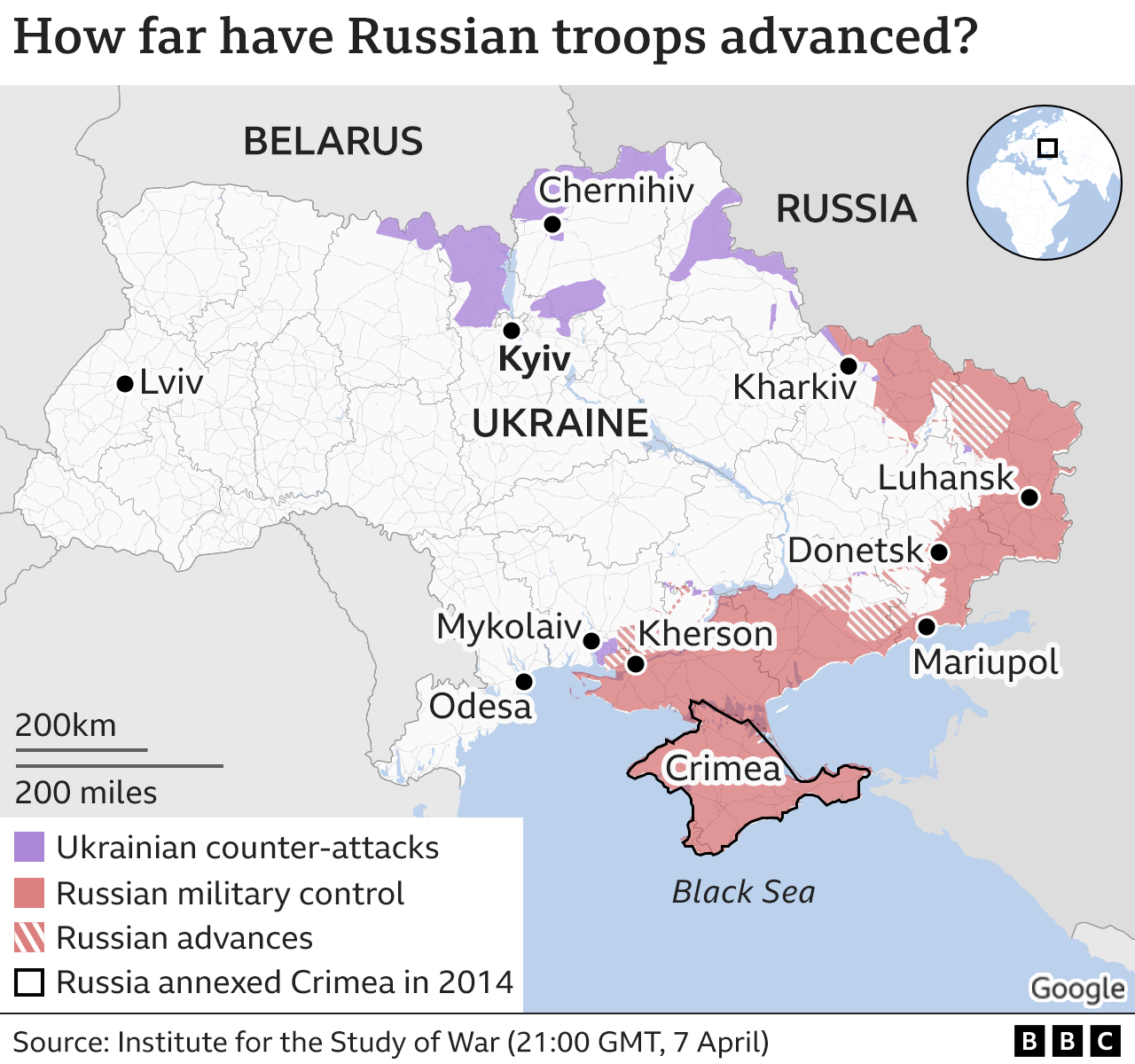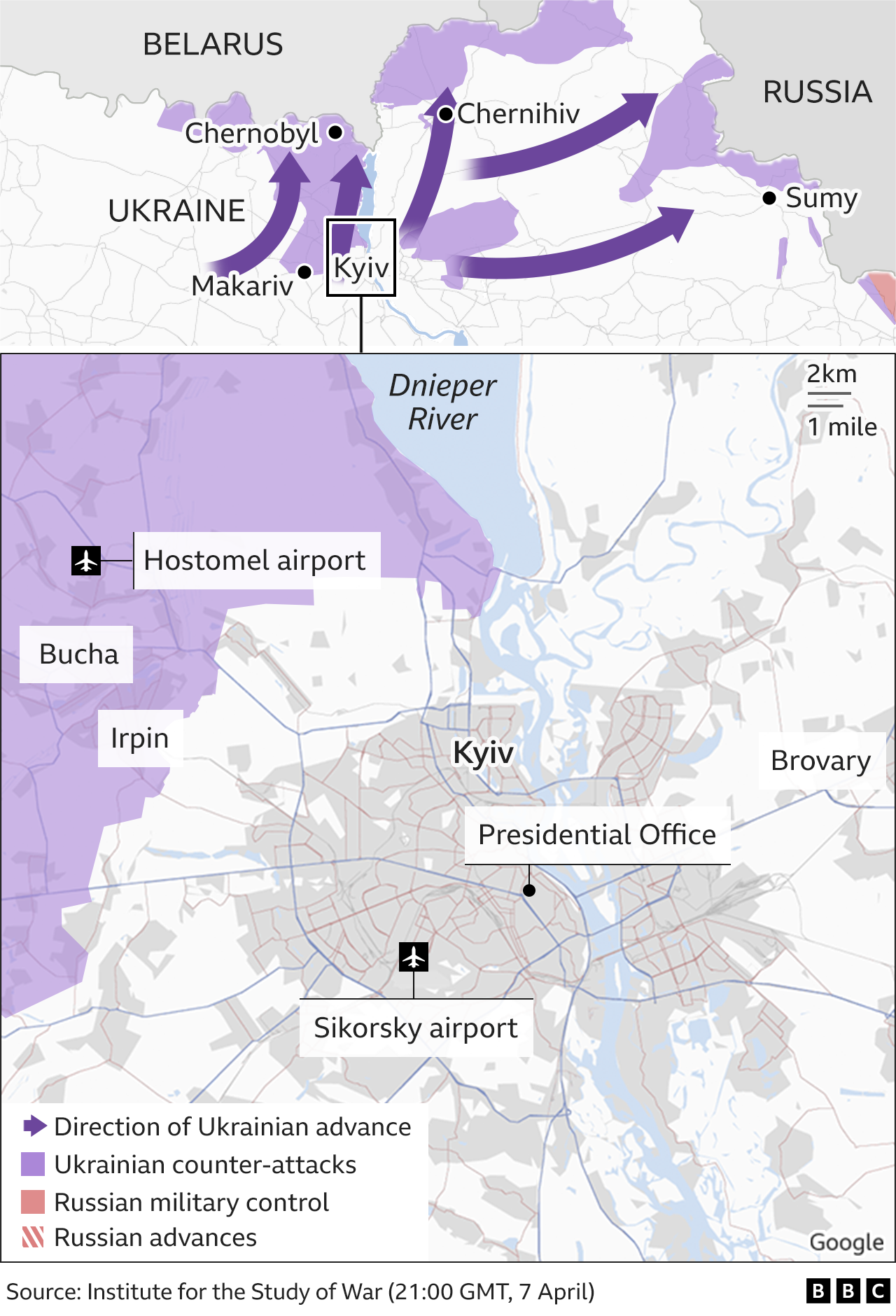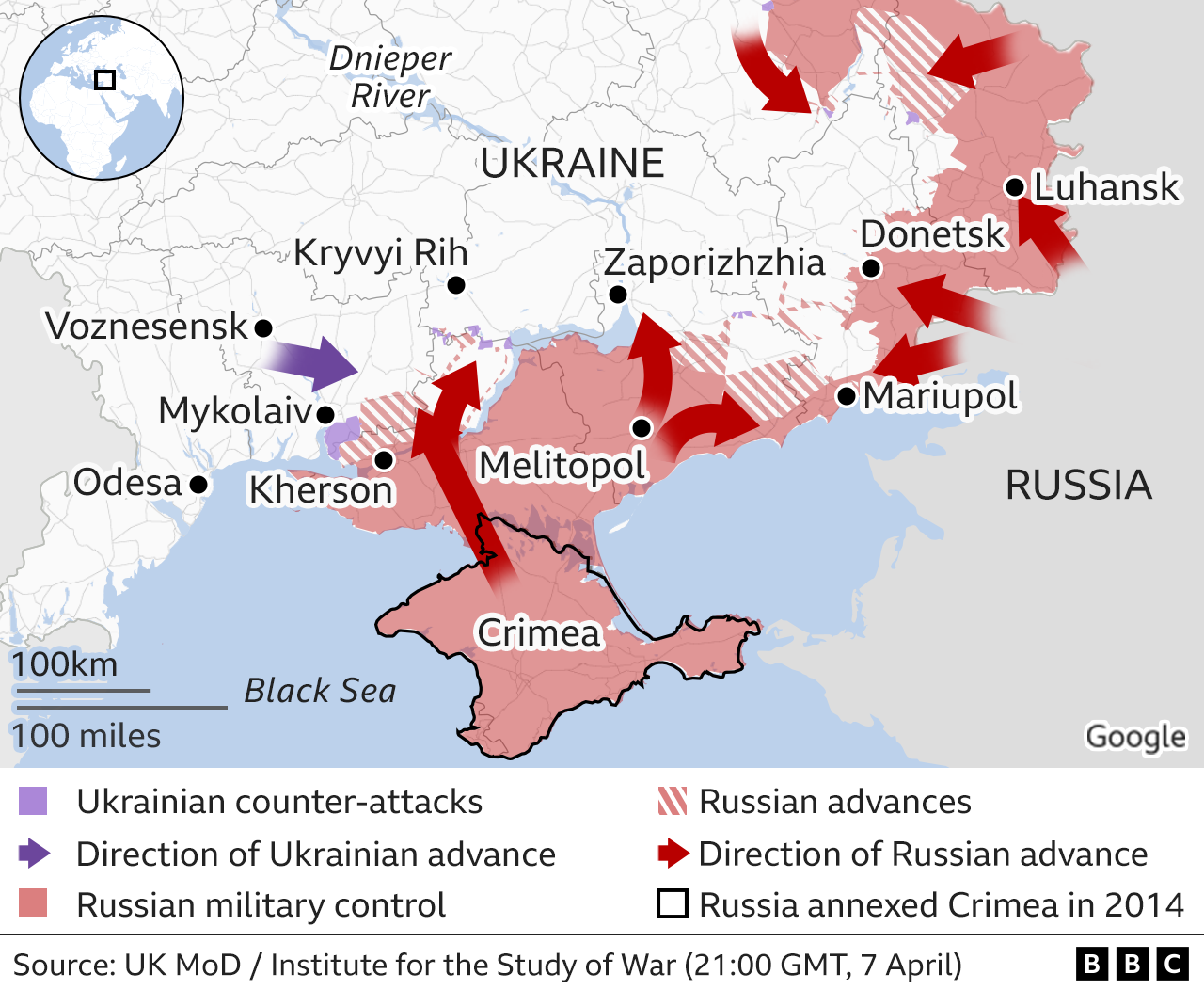BBC News 8 April 2022 - by the Visual Journalism Team
Russia has fully withdrawn troops from northern Ukraine but is targeting more territory in the eastern regions of the country.
Here are the latest developments on day 44 of the invasion:
- Russia has now withdrawn its forces from the northern cities of Kyiv, Chernihiv and Sumy
- Ukrainian forces have pushed back attacks on Slovyansk, but the city has endured heavy shelling
- People have been urged to evacuate the eastern Donbas region as Russian troops advance
- Pro-Russian forces claim to have captured central Mariupol in the south
Russia invaded Ukraine on 24 February, but its forces have now fully withdraw from northern Ukraine to Belarus and Russia, according the UK Ministry of Defence.
Russian units which have been withdrawn from around the capital Kyiv are unlikely to "regain combat effectiveness for some time" and it is unclear if they will be redeployed, according to the Institute for the Study of War (ISW).
Ukrainians retake key terrain in north
Ukrainian forces have retaken areas around Kyiv and to the north of the city as the Russian forces have withdrawn. Analysts at the ISW suggest the threat from Russian units around Kyiv is so low that some Ukrainian forces could be redeployed to bolster defences in the east.
Images from several of the liberated towns show huge amounts of damage and destruction to lives and property, with allegations of war crimes having been committed by Russian troops.
Russian forces have left Sumy and are reported to be regrouping in Belgorod to help the push from Izyum towards Slovyansk.
The Russian withdrawal has also allowed Ukrainian forces to retake the area around Chernihiv, a strategically important city to the north-east of Kyiv that sits between the capital and the Russian border.
Ukrainian forces are now pushing north and have regained control over parts of the border areas, according to the ISW.
Russia targets full control in the east
With recent setbacks elsewhere in the country, Russian officials have said that the focus of its forces is now the "complete liberation" of the Donbas.
The Donbas broadly refers to Ukraine's eastern regions of Donetsk and Luhansk, where Russian-backed separatists held significant territory before Russia's invasion.
Russian troops continue to launch air and artillery attacks on cities in the region.
While the bombardment of Kharkiv in the north of Luhansk continues, analysts at the ISW say Russian troops are hoping to advance down from Izyum towards Slovyansk and encircle Ukrainian forces to the east.
The governor of Luhansk has called on all civilians to evacuate to safer regions in the centre or west of Ukraine.
Russian progress slows in the south
Russian forces initially made rapid gains in the south, with their main objective being the creation of a land corridor between Crimea, which it annexed in 2014, and areas held by Russian-backed separatists in Donetsk and Luhansk.
Standing in the way of that objective has been the port city of Mariupol, which has been encircled by Russian forces since the start of March.
There are unverified claims from pro-Russian forces that they have captured the centre of the city. But there are pockets of Ukrainian resistance in the port area.
Analysts say it is unclear how much longer the Ukrainians can hold on.
To the west, Russia had been attempting to push towards Odesa, with the aim of cutting off Ukraine's access to the Black Sea.
Their advances stalled at Mykolaiv, where a counter-attack by Ukrainian troops pushed Russian forces back towards the city of Kherson.
By David Brown, Bella Hurrell, Dominic Bailey, Mike Hills, Lucy Rodgers, Paul Sargeant, Mark Bryson, Zoe Bartholomew, Sean Willmott, Sana Dionysiou, Joy Roxas, Gerry Fletcher, Jana Tauschinsk, Debie Loizou and Prina Shah.
About these maps
To indicate which parts of Ukraine are under control by Russian troops we are using daily assessments published by the Institute for the Study of War with the American Enterprise Institute's Critical Threats Project.
From 2 March this daily assessment differentiated between "Assessed Russian-controlled Ukrainian territory" and "Assessed Russian advances in Ukraine", the latter indicating areas where Russians are believed to have launched attacks from but which they do not control.
To show key areas where advances are taking place we are also using daily updates from the UK Ministry of Defence and BBC research.
The situation in Ukraine is fast moving and it is likely there will be times when there have been changes not reflected in the maps.






